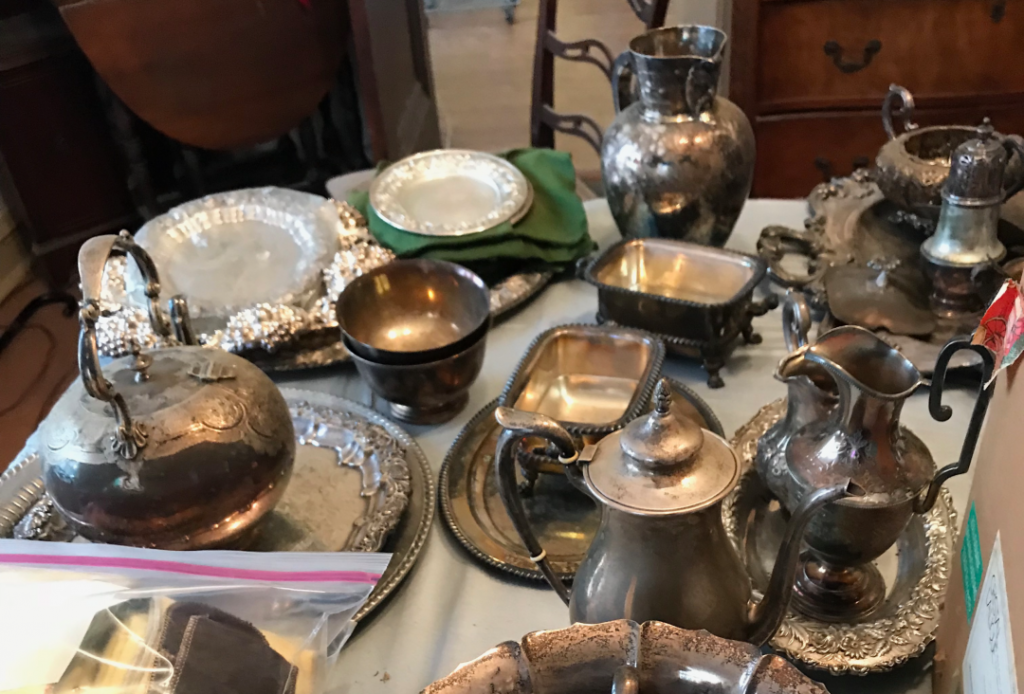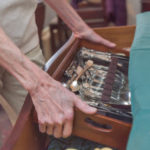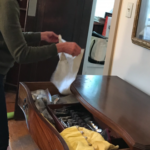Silver is one of the most prevalent items we find in significant quantities in our clients’ homes. There is a big difference, though, between sterling silver and silver plate.
To start, keep in mind this simple and general way to look at silver:
Of course, this is over-simplifying things a bit, but it generally holds true. One of the things we have found in most houses is that the sterling and the silver plate are often mixed together.
So, the first step is to separate the sterling silver from the silver plate. The key to doing this is to identify the sterling silver by its hallmark. (To learn more about sterling silver hallmarks, you can visit this site; to learn more about silver plate markings, we recommend this site.)

Once all your silver has been sorted, the next step is to identify what to keep. Highly polished silver adds a great decorative touch to any table. So, consider:

The final step is to contact a silver buyer about any remaining pieces.
When we coordinate the sales process as a service for our clients, we lay everything out on a table for the buyer to review. We don’t need to polish the items, as the buyer is well aware of worth regardless of patina.

Some buyers will take silver plate items in good condition, but others will not. Depending on the size and status of your collection, you may also need to consider donation or a garage/estate sale. For flatware sets, it might also be worth considering consignment. Often, we have found consignment stores are more willing to accept silver plate flatware sets because of their marketability.
As always, the CMFTO team would be happy to assist you by answering any questions you may have about your sterling silver and silver plate items, including facilitating a sale.
All my best,
Claudia